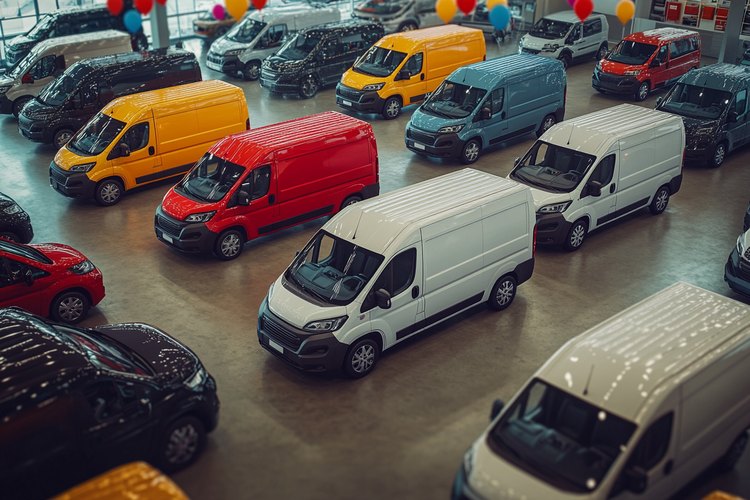Discover the 2026 Toyota Proace: Versatility Meets Innovation
Discover the future of utility with the 2026 Toyota Proace, where versatility meets innovation. This groundbreaking vehicle is designed to adapt to the needs of both businesses and families, providing electrified options that prioritize sustainability while cutting fuel costs. With smart cargo solutions and family-friendly configurations, the Proace excels in load capacity and comfort.

The automotive landscape continues to evolve, and Toyota’s latest iteration of the Proace demonstrates how manufacturers are responding to changing consumer demands. This vehicle bridges the gap between commercial utility and personal comfort, offering configurations that serve both professional tradespeople and growing families. Understanding what makes this model stand out requires examining its core features, practical applications, and the technological advancements that define its place in the market.
Smart Cargo Solutions and Family-Friendly Passenger Versions
The 2026 Proace arrives with thoughtfully designed cargo configurations that maximize utility without sacrificing usability. The commercial variants feature modular shelving systems, reinforced floor panels, and strategically placed anchor points that allow businesses to customize their workspace according to specific trade requirements. Electricians, plumbers, and delivery services will find the interior layout accommodates tools, equipment, and materials efficiently.
For families and passenger-focused applications, the Proace transforms into a comfortable transportation solution with seating arrangements for up to nine occupants depending on the configuration. The passenger versions include climate control zones, ample legroom across all rows, and storage compartments integrated throughout the cabin. Sliding doors on both sides facilitate easy entry and exit, particularly valuable in tight parking situations or when loading children and elderly passengers. The versatility extends to seat-folding mechanisms that allow quick transitions between passenger transport and cargo hauling when needed.
What to Look For: Load Capacity
Load capacity remains a critical consideration for anyone evaluating commercial vehicles or large passenger vans. The 2026 Proace offers multiple wheelbase options, each providing different payload capabilities to match specific operational requirements. The standard wheelbase model typically handles payloads in the range of 1,000 to 1,200 kilograms, while extended versions can accommodate higher weights depending on configuration and regional specifications.
Beyond raw numbers, practical load capacity involves understanding how weight distribution affects handling and fuel efficiency. The Proace incorporates a low loading height, generally around 550 to 600 millimeters from ground level, which reduces physical strain when loading heavy items and improves overall safety during cargo operations. The cargo bay dimensions vary by model, with lengths ranging from approximately 2,500 millimeters in compact versions to over 3,700 millimeters in long-wheelbase configurations. Width between wheel arches typically measures around 1,400 millimeters, allowing standard Euro pallets to fit comfortably.
Businesses should also consider cubic capacity, as volume often matters more than weight for certain industries. The Proace delivers cargo volumes from roughly 5 cubic meters up to 6.6 cubic meters in its largest configuration, providing flexibility for transporting bulky but lightweight materials such as insulation, packaging materials, or furniture.
Accessibility Features and Tech Upgrades That Set the New Proace Apart
Modern vehicles succeed not just on mechanical capability but on how well they integrate technology and user-friendly design. The 2026 Proace introduces several accessibility enhancements that improve daily usability for drivers and passengers alike. Keyless entry systems, power-sliding doors, and adjustable driver seats with lumbar support address common pain points in commercial vehicle operation.
The technology package includes a central touchscreen infotainment system with smartphone integration through both Apple CarPlay and Android Auto, allowing seamless connection to navigation apps, communication tools, and entertainment options. A rearview camera system comes standard, with higher trim levels offering 360-degree camera views and parking sensors that simplify maneuvering in confined spaces.
Safety technology receives particular attention, with the Proace featuring Toyota Safety Sense systems that include adaptive cruise control, lane departure warning, automatic emergency braking, and blind-spot monitoring. These features reduce driver fatigue on long journeys and provide additional protection in urban environments where pedestrians and cyclists are common.
Connectivity extends to fleet management capabilities, with available telematics systems that allow business owners to monitor vehicle location, fuel consumption, maintenance schedules, and driver behavior. This data-driven approach helps optimize operational efficiency and reduce long-term ownership costs.
Powertrain Options and Efficiency Considerations
The 2026 Proace typically offers diesel engine options known for their torque delivery and fuel economy, characteristics particularly valued in commercial applications. Engine sizes generally range from 1.5-liter to 2.0-liter displacement, with power outputs between 100 and 180 horsepower depending on the variant. Manual and automatic transmission options provide flexibility based on driver preference and operational requirements.
Fuel efficiency varies with configuration and load, but operators can generally expect consumption figures in the range of 6 to 8 liters per 100 kilometers under mixed driving conditions. These estimates depend heavily on driving style, cargo weight, and terrain, so real-world results may differ.
Some markets may see electrified versions or hybrid powertrains as manufacturers respond to environmental regulations and customer demand for reduced emissions. Those considering the Proace should investigate regional availability of alternative fuel options if sustainability goals are a priority.
Practical Ownership Considerations
Owning a vehicle like the Proace involves evaluating total cost of ownership beyond the initial purchase price. Maintenance intervals, parts availability, insurance costs, and resale value all contribute to long-term financial planning. Toyota’s reputation for reliability generally translates to lower maintenance costs compared to some competitors, though actual expenses depend on usage patterns and service provider rates.
Warranty coverage typically includes a manufacturer’s warranty for the first three years or a specified mileage limit, with extended warranty options available for those seeking additional protection. Regular servicing at authorized centers helps maintain warranty validity and ensures the vehicle operates at peak efficiency throughout its service life.
Businesses should also factor in depreciation rates when calculating return on investment. Commercial vehicles generally depreciate based on mileage and condition, with well-maintained examples retaining value better than those subjected to harsh operating conditions without proper care.
Conclusion
The 2026 Toyota Proace addresses the evolving needs of both commercial operators and families seeking versatile transportation solutions. Its combination of practical cargo capabilities, passenger comfort options, and modern technology creates a compelling package in the competitive van segment. By carefully evaluating load capacity requirements, desired features, and total ownership costs, potential buyers can determine whether this model aligns with their specific transportation needs and operational goals.




